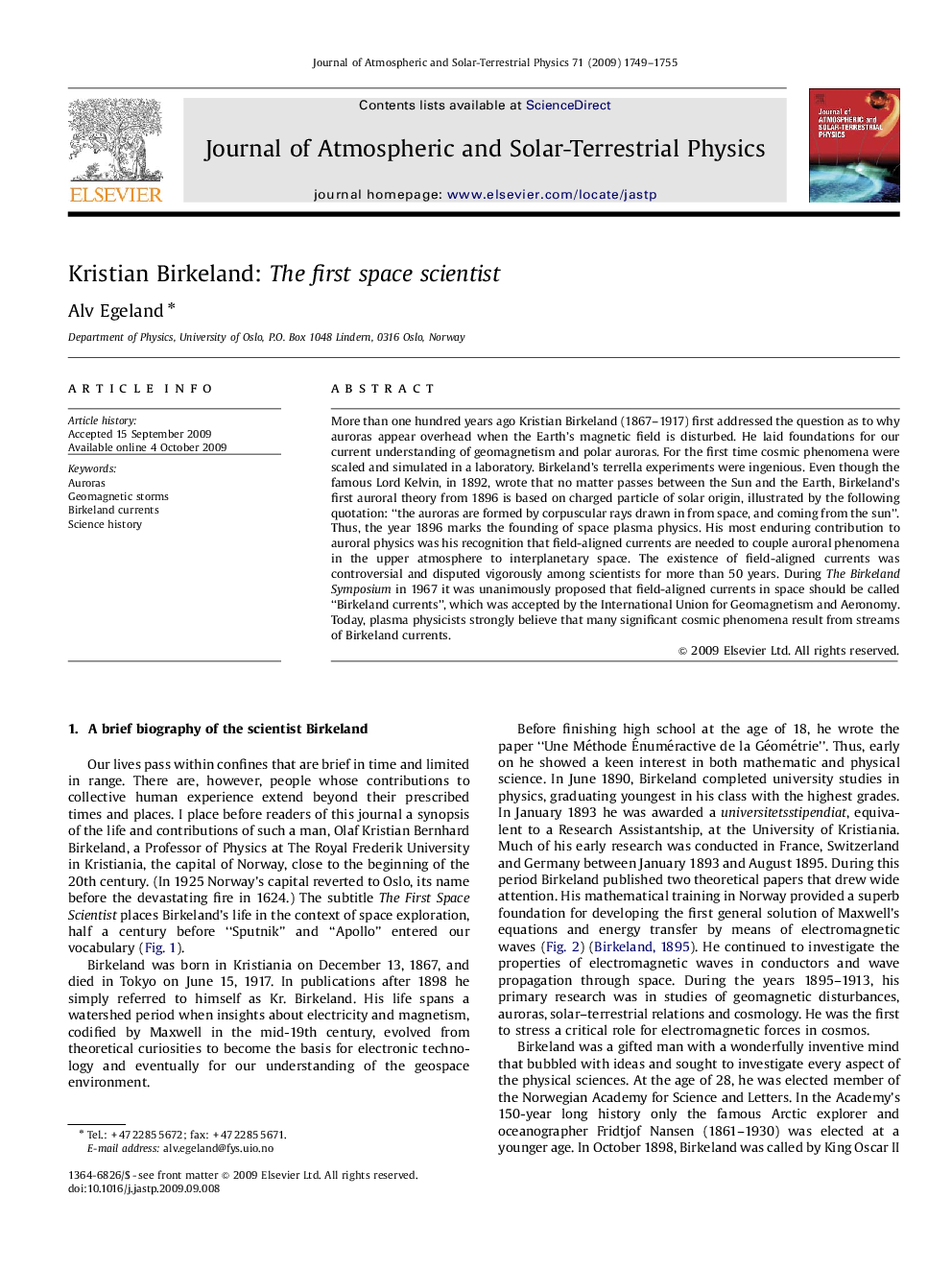| Article ID | Journal | Published Year | Pages | File Type |
|---|---|---|---|---|
| 1777654 | Journal of Atmospheric and Solar-Terrestrial Physics | 2009 | 7 Pages |
More than one hundred years ago Kristian Birkeland (1867–1917) first addressed the question as to why auroras appear overhead when the Earth's magnetic field is disturbed. He laid foundations for our current understanding of geomagnetism and polar auroras. For the first time cosmic phenomena were scaled and simulated in a laboratory. Birkeland's terrella experiments were ingenious. Even though the famous Lord Kelvin, in 1892, wrote that no matter passes between the Sun and the Earth, Birkeland's first auroral theory from 1896 is based on charged particle of solar origin, illustrated by the following quotation: “the auroras are formed by corpuscular rays drawn in from space, and coming from the sun”. Thus, the year 1896 marks the founding of space plasma physics. His most enduring contribution to auroral physics was his recognition that field-aligned currents are needed to couple auroral phenomena in the upper atmosphere to interplanetary space. The existence of field-aligned currents was controversial and disputed vigorously among scientists for more than 50 years. During The Birkeland Symposium in 1967 it was unanimously proposed that field-aligned currents in space should be called “Birkeland currents”, which was accepted by the International Union for Geomagnetism and Aeronomy. Today, plasma physicists strongly believe that many significant cosmic phenomena result from streams of Birkeland currents.
